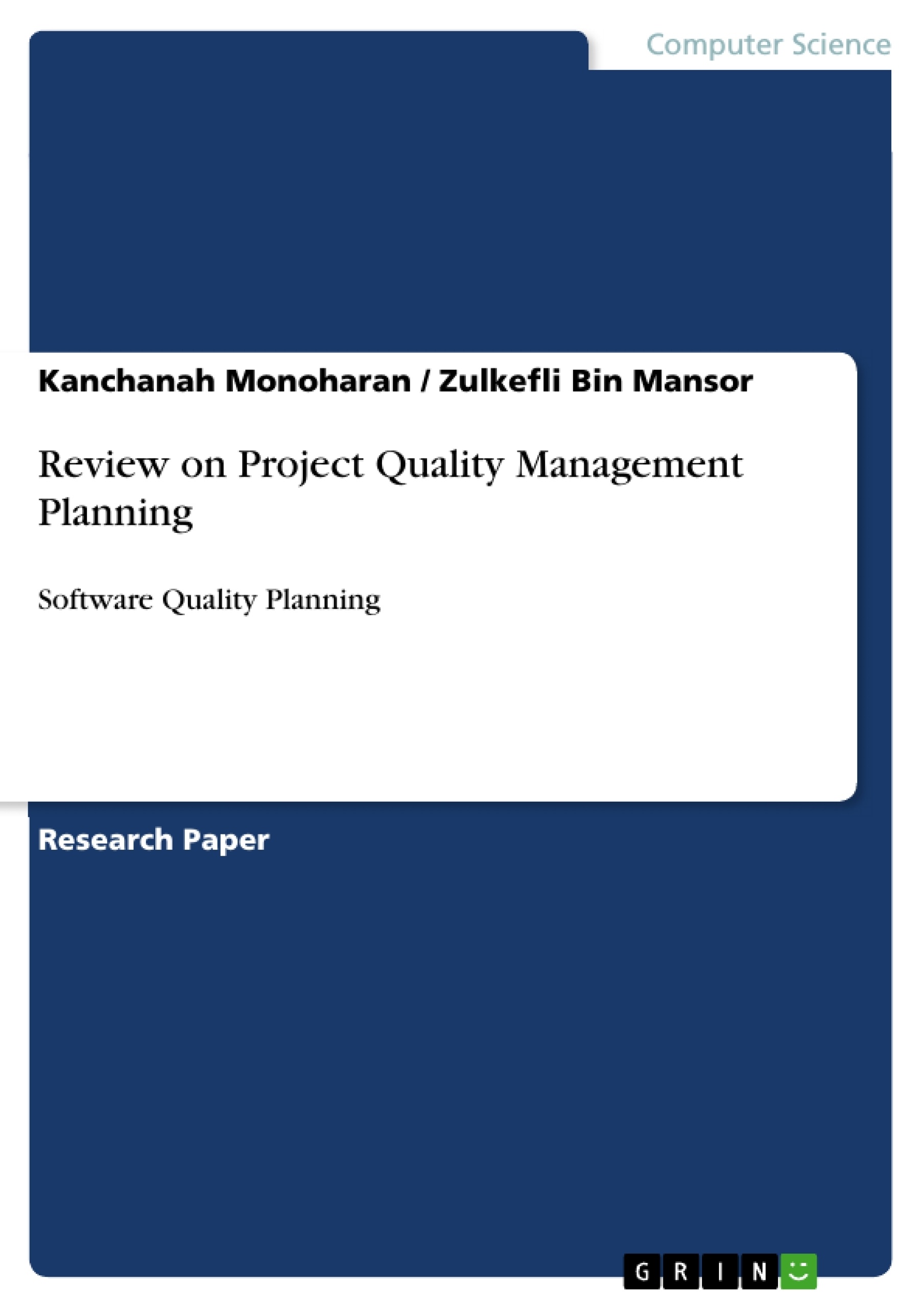Software Quality Planning is one of the primary processes in Project Quality Management among Quality Assurance and Quality Control. It is an essential practice to deliver a defect free or non-critical bug application that meets client’s expectation. The purpose of this research was to find out quality planning failure factors in IT projects. Another aim was to determine, a proper quality planning standard framework that should be implemented in Information Technology (IT) projects. This study examined the earlier researches in quality management and project management areas to identify the failure reasons and critical quality planning dimensions that should be followed in IT projects. Research discovered that there were total 21 vital dimensions plus an additional dimension was introduced in this study. As a conclusion, it is important to have all this elements as a standard in each IT projects to overcome or reduce the number of failures.
Inhaltsverzeichnis (Table of Contents)
- Introduction
- Overview of Project Management (PM)
- IT Project Failure Factors
- Poor planning
- Unclear goals and objectives
- Objectives changing during the project
- Unrealistic time or resource estimates
- Lack of executive support and user involvement in quality testing
- Failure to communicate and act as a team
- Inappropriate skills
- Overview of QM
- Quality revolution or QM movement
- Traditional Against Modern QM
- Project QM Process
- Dimensions in QM Planning
- Input
- Tools & Techniques
- Output
Zielsetzung und Themenschwerpunkte (Objectives and Key Themes)
This research paper aims to identify the failure factors in IT project quality planning and propose a suitable quality planning framework that should be implemented in IT projects. This paper reviews existing research in quality management and project management to pinpoint crucial quality planning dimensions that contribute to success. The primary objective is to provide actionable insights for IT project managers to mitigate project failure risks and ensure a smooth delivery process. Here are some key themes explored in this work: * **Project quality management (QM) in IT projects**: The importance of planning, assurance, and control processes in ensuring successful IT project delivery. * **Identifying common IT project failure factors**: Examining the root causes of project failures, particularly in the context of quality planning. * **The role of quality planning in IT projects**: Highlighting the significance of quality planning in mitigating project failure risks and ensuring quality deliverables. * **Traditional versus modern quality management**: Understanding the shift from departmentalized quality control to a more comprehensive and organization-wide approach. * **Developing a framework for quality planning in IT projects**: Proposing a standardized set of dimensions and practices to enhance quality planning in IT projects.Zusammenfassung der Kapitel (Chapter Summaries)
- The introduction sets the context by defining IT projects and explaining the crucial role of quality planning in their successful execution.
- The chapter on "Overview of Project Management (PM)" provides a comprehensive overview of the project management processes, including the five process groups (initiating, planning, executing, monitoring and controlling, and closing) and the nine knowledge areas (integration, scope, time, cost, quality, human resource, communications, risk, and procurement).
- The chapter focusing on "IT Project Failure Factors" delves into the main reasons why IT projects fail, with a particular emphasis on the project QM process and the alignment of IT with organizational cultures. The chapter examines key factors such as poor planning, unclear goals and objectives, changing objectives during the project, unrealistic time and resource estimates, lack of executive support and user involvement in quality testing, failure to communicate and act as a team, and inappropriate skills.
- The chapter "Overview of QM" explores the concept of quality and its evolution, discussing the work of key figures in the quality movement, such as Deming, Juran, and Crosby, and their contributions to defining and achieving quality in organizations.
- The chapter on "Traditional Against Modern QM" contrasts traditional and modern approaches to quality management, highlighting the shift from department-specific quality control to a more integrated and holistic approach across the organization.
- The chapter "Project QM Process" describes the three main components of the project QM process: quality planning, quality assurance, and quality control. This chapter outlines the purpose and key activities of each process within the context of project management.
- The chapter on "Dimensions in QM Planning" delves into the crucial elements of quality planning, including input, tools and techniques, and output. This chapter emphasizes the importance of defining quality standards throughout the SDLC to ensure effective quality management.
Schlüsselwörter (Keywords)
The core concepts and keywords of this paper are focused on IT project quality management, particularly in the context of planning. The text addresses key issues such as project failure factors, quality planning dimensions, traditional vs. modern QM approaches, and the importance of integrating quality into all phases of the software development life cycle (SDLC).- Quote paper
- Kanchanah Monoharan (Author), Dr. Zulkefli Bin Mansor (Author), 2012, Review on Project Quality Management Planning, Munich, GRIN Verlag, https://www.grin.com/document/201170




